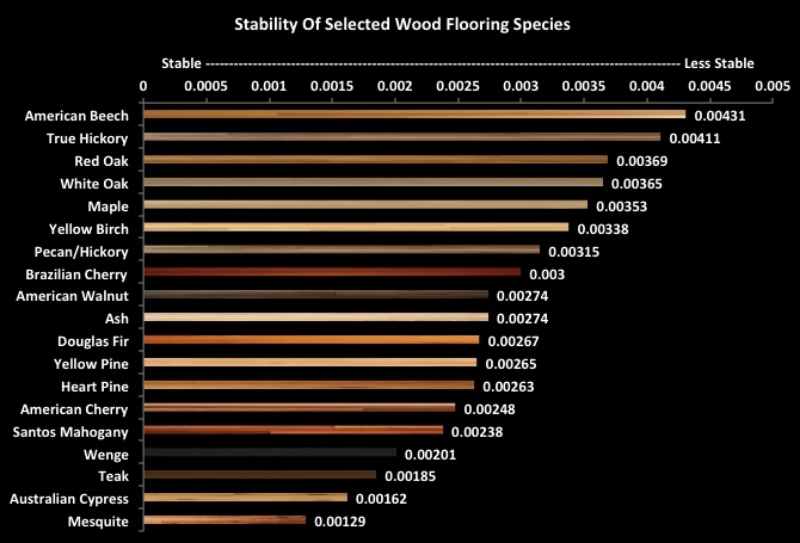Cold weather is fast approaching! If you have wide plank floors installed in your winter getaway or ski house, or even in your year-round home, now is a good time to start thinking about how you will prep them for the lower temperatures that will come with the arrival of fall and then winter. Contracting wood floors can leave gaps between the planks if the relative humidity of your home drops too low.
Here are a few things you need to consider to protect your wide plank floors from the colder weather.
Why do wood floors fluctuate during the winter?
Wood is hygroscopic, meaning that it absorbs and releases moisture depending on the moisture content of the air around it. Wood planks expand in the summer as they absorb the extra humidity present in the air, and they contract during the winter as the humidity levels drop.
A small amount of contraction during the winter is normal, which can result in small gaps between planks. However, if the humidity levels in your house drop too low, you risk having your floors contract too much, which can lead to squeaking, split-outs, or, at the very least, large and unsightly gaps.
What kind of wide plank floors do you have?
The first step to protecting your floors from the effects of dropping humidity during the winter is to evaluate which kind of floors are installed in your house. Wide plank floors are more susceptible to these changes than narrower planks. A 5-inch-wide plank will shrink twice as much as a 2¼-inch-strip floor, so the size of the gap between 5-inch boards will be twice as big as the gap between 2¼-inch boards.
Besides the width of your floors, the type of wide plank flooring you have also matters. Solid wide plank floors will fluctuate less than engineered wide plank floors.
Some species are more dimensionally stable than others, which means that they won’t respond as much to fluctuations in the environment around them compared to species that are less dimensionally stable. For example, American cherry is more dimensionally stable than white oak or red oak and therefore an American cherry floor will hold out better in colder weather.

Rift and quartered floors, for example, are also more dimensionally stable than other cuts, such as plainsawn flooring.
There are a couple of options to minimize the amount of contracting that your wood floors will experience during the winter.
Option #1: Increase moisture
The drop in relative humidity (RH) levels is the main reason why the floors contract during the winter. Therefore, you can prevent your floors from contracting too much by adding moisture back to the air by way of a humidifier or some other system attached to the house’s forced-air furnace.
Although it is difficult to completely control the humidity throughout a household, especially if the house is particularly large, you can try introducing a humidifier to the environment. A humidifier adds several pints per hour to the house, therefore keeping the humidity at an acceptable level. You can choose to use either standalone humidifier or one that’s attached to a forced-air furnace.
Be sure to monitor the humidity of their house while the humidifier is on. Adding too much moisture to the house can cause problems with excessive condensation and mold.
According to Wood Floor Business, “To reduce winter gapping, don’t let the indoor RH drop too much. A good annual range for the best flooring performance is a swing of 20 percent RH from wettest to driest. This means that in the Southeast, we may work in a range of 40 to 60 percent RH, while up north they may use 30 to 50 percent, and out west they may use 20 to 40 percent. You have to consider the species in question when trying to add moisture back into the air. For a given change in moisture content, a 5-inch-wide hickory plank will shrink more than a 5-inch-wide red oak plank.”
Option #2: Reduce ventilation
The second option is to reduce the amount of ventilation, or the amount of cold air entering the house from outside. One way to do this is to pinpoint leakage sites in your home, such as old windows and holes in ceilings or floors, and remedy these problems. Home energy audits can help you measure your ventilation rates to see where you stand.
When you bring cold outside winter air into a house and warm it up, the RH of that air drops significantly. For example, air at 30 degrees Fahrenheit and 50 percent RH when warmed to 70 degrees will be at 10 percent RH. To get the RH of this air back up to something respectable, we would need to add moisture.
